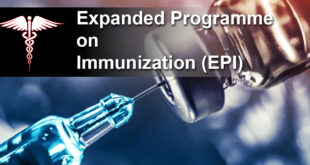Diabetes has become a public health problem, and this is particularly so in India where almost 20% of all people with diabetes in the world live. More worrying than the absolute numbers of people with diabetes, are the complications related to diabetes. Diabetes is a leading cause of blindness, kidney failure, limb amputations, heart attacks, strokes and other health complications. What is responsible for the rising number of people with diabetes and its complications? It is ‘clinical inertia’. Clinical inertia is traditionally defined as the “failure of healthcare providers to intensify treatment when it is indicated”. It is well-known that if one’s glycated haemoglobin (a test of three months’ diabetes levels) is kept below 7% and if blood pressure and lipids are controlled well, the majority of complications of diabetes can be avoided. Yet, this is more easily said than done; this where clinical inertia comes in. Clinical inertia can be at the level of the physician, the patient or the healthcare system. Diabetes has a long natural history, starting at the stage of normal glucose tolerance (NGT), then the stages of pre-diabetes and diabetes, and finally the stage of complications. Even at the stage of NGT, it is possible to identify the ‘high-risk group’ of those who are likely progress to diabetes. Obesity, unhealthy diet, sedentary behaviour and stress are known risk factors. If one is able to institute preventive measures early, say, while individuals are in school, by increasing physical activity and promoting healthier diets, obesity rates can be reduced. Delay in doing this constitutes the first phase of clinical inertia: obesity is the forerunner of Type 2 diabetes. In pre-diabetes stage, a lot can be done. However, pre-diabetes being a totally asymptomatic condition, unless large-scale screening is done it will be missed. This constitutes the second phase of clinical inertia. Indians have a rapid progression rate from pre-diabetes to diabetes. The good news is that through simple lifestyle measures, such as walking 30 to 45 minutes a day, cutting down on carbohydrates (particularly polished rice and refined wheat) and substituting them with healthy vegetables, up to 30% of people with pre-diabetes can be saved from developing diabetes, as we have shown in recent studies. Once people have developed diabetes, from Day 1 good control of diabetes and its associated conditions must be achieved. If this is not done, this is the third phase of clinical inertia, and this increases the risk of developing complications. At least once a year, every person with diabetes has to undergo a thorough screening for complications of diabetes. If these complications are detected in the initial stages, it is possible to reverse them, or at least slow their progression. If this is not done, it leads to the fourth phase of clinical inertia, and individuals may then progress to the end-stage of these complications. The latter will require expensive treatment; it also affects the quality of life and may shorten the life span. But here again, there is good news. We have shown through studies that people with diabetes can now live up to 50 or more years with the disorder. Indeed, many of our own patients are in their 90s and doing well. Thus it is clear that clinical inertia has to be prevented at every stage of the natural history of diabetes. In any given population, we will find people in all stages of the natural history of diabetes. It is our duty as healthcare professionals and public health workers to engage with the community and empower them. If this is done, not only will the incidence of diabetes come down, but perhaps one day we can boast of a ‘diabetes-free India’, or at least one that is free of its dreaded complications.
Check Also
The Kunming-Montreal Global Biodiversity Framework
Introduction The Kunming-Montreal Global Biodiversity Framework (KMGBF) is a landmark international agreement aimed at addressing …
 Chinmaya IAS Academy – Current Affairs Chinmaya IAS Academy – Current Affairs
Chinmaya IAS Academy – Current Affairs Chinmaya IAS Academy – Current Affairs



